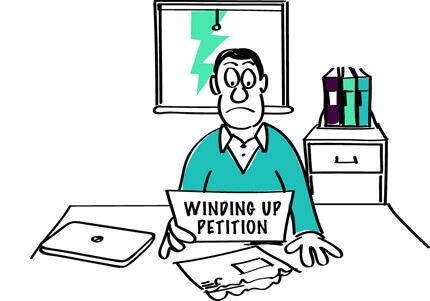A Winding Up Petition- What Is It?

Creditors often find themselves in challenging situations when debtors fail to honour financial obligations. If a creditor believes the debtor company is insolvent and ought to be wound-up, then they can issue a winding up petition.
However, it is important to note that a winding up petition is not a step taken lightly; it emerges when a debtor owes a creditor more than £750 and has neglected payment for over 21 days. For creditors, this often represents the culmination of failed negotiations and broken trust.
This method is typically seen as a last resort, employed only when all other attempts to recover the debt have failed. It is important to note that the legal system does not view a winding up petition as a debt recovery tool. Instead, it signifies the company’s incapacity to meet financial obligations, meaning they are potentially insolvent. Through the liquidation process, a strategy is executed to gather the company’s assets and distribute them among creditors. After paying the secured creditors and covering associated expenses.
Winding Up Petition Process
The winding up petition process unfolds with the creditor firstly engaging professional advice and assistance to seek an order to place the company into compulsory liquidation. The creditor then declares an intention to file the petition if a satisfactory proposal is not received within 21 days.
The subsequent advertisement has two main goals. Firstly, it lets the potentially insolvent company know that legal action is being taken against them. Secondly, it tells other possible creditors that the company is facing financial difficulties. This strategic step could encourage additional creditors to join the petition, making the creditor’s legal position stronger.
The freezing of the accounts is a crucial step for the creditor because it helps prevent the debtor company from quickly using or getting rid of its assets. When the creditor submits the petition, banks take action by freezing the accounts. This restricts the debtor’s ability to carry out regular business activities.
Winding Up Order
If the case goes to court, a judge reviews the company’s financial situation. If the company is found to be insolvent with no prospects of getting financially stable in the future, the judge issues a winding up order. After this, either an Official Receiver or a liquidator takes charge to oversee the process of liquidating the company. Their role is to ensure that the money from selling assets is fairly distributed among the creditors.
To sum up, from the creditor’s point of view, a winding up petition is a significant, albeit last resort step. Showing the creditor’s seriousness when other attempts to resolve the debt have not worked.
If you need assistance in issuing a winding up petition, please call our team now on 020 7692 8457. Or drop us an email at info@ilrecoveries.co.uk.
